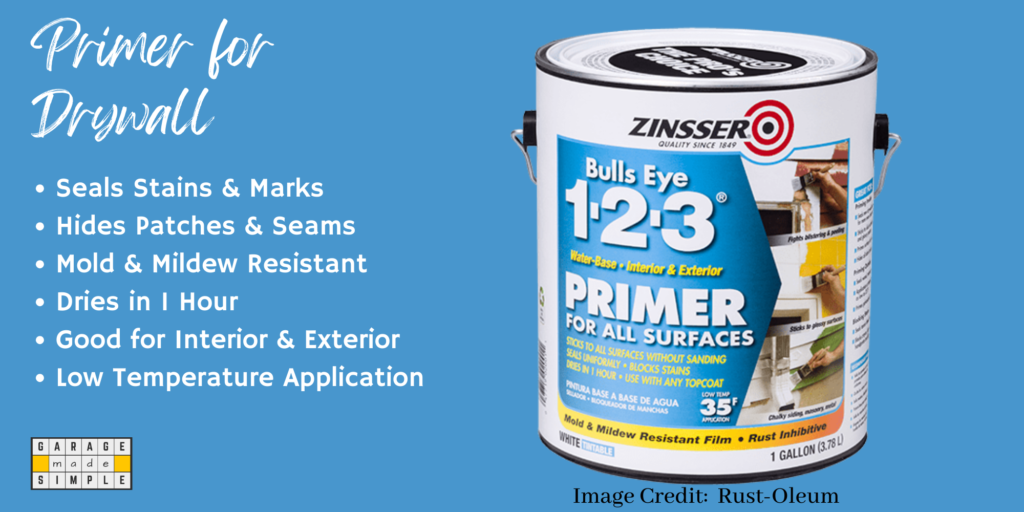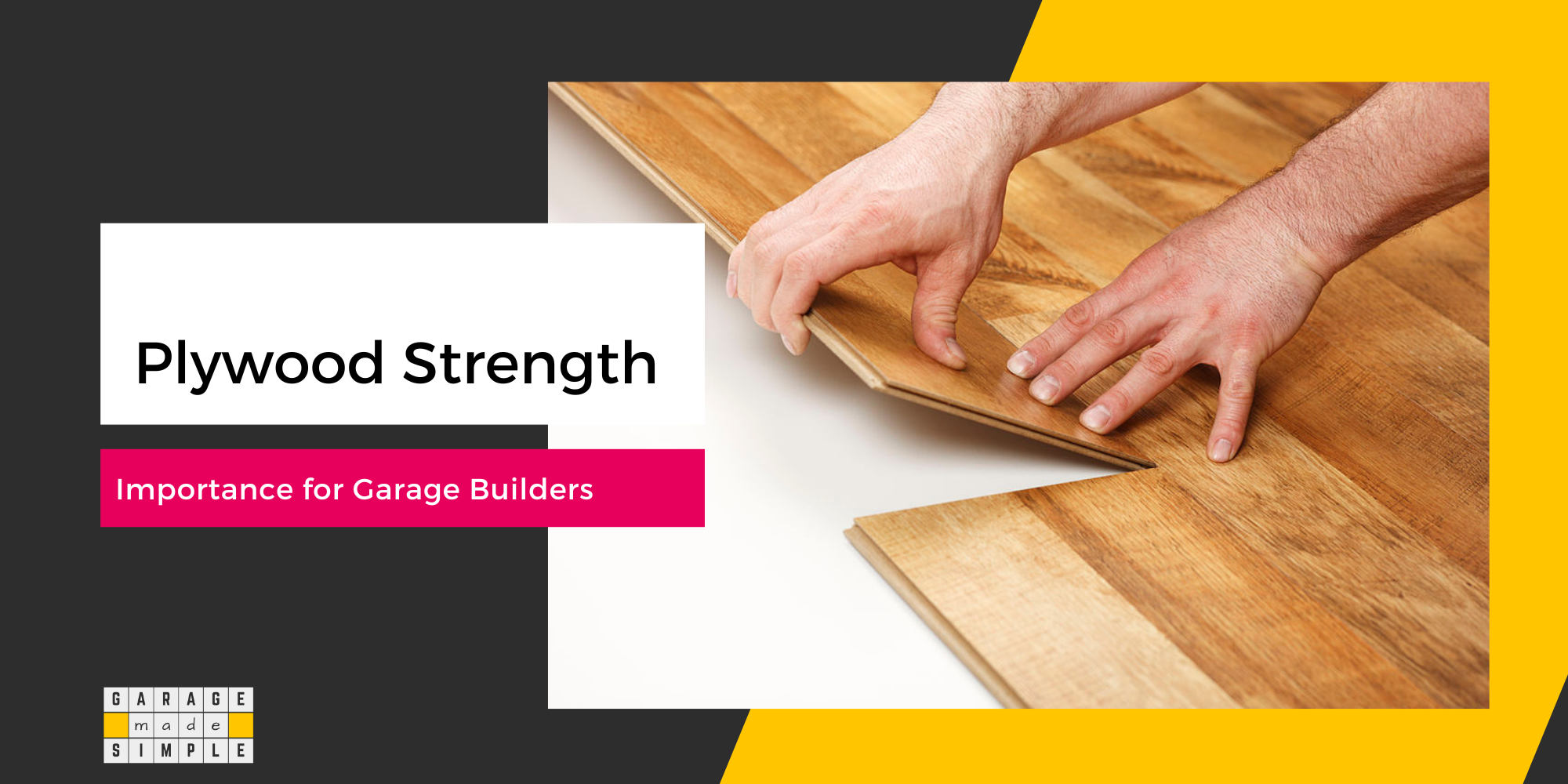Priming Drywall for Paint: Why is it Important & 3 Easy Steps to Do It!
As an Amazon Associate, I earn from qualifying purchases.
Is Priming Drywall for Paint Necessary?
So, you have finished installing the drywall boards in your garage. Not only that; you have even completed prepping the drywall and are ready to paint. But you may be wondering if you have to prime drywall before painting?
There is sometimes a debate, but the truth is that priming drywall for paint is absolutely necessary, if the drywall is new.

Priming drywall
- Improves adhesion of paint to the drywall surface
- Seals the porous drywall and reduces paint consumption
- Ensures uniform color development of the paint film
- Prevents stains from bleeding through
- Enhances durability of the entire paint job
So, what happens if you go ahead and paint the new drywall of your garage walls without priming it? You will run into one or more of the following problems.
- Uneven paint coverage: Paint may appear blotchy or patchy due to uneven absorption on the unprimed drywall surface.
- Premature peeling: Paint may start peeling prematurely due to poor adhesion caused by the lack of primer.
- Staining: Stains may bleed through the paint, marring the appearance of the finished surface.
- Reduced durability: The paint on your garage walls are more likely to get damaged from moisture, scuffs, and scratches.
For a previously painted drywall, it is possible to skip priming the drywall, if the paint film is not peeling and is in sound condition. However, priming new drywall before painting is absolutely essential.
How to Prime New Drywall for Paint in 3 Steps
Priming Drywall for paint is an important part of finishing drywall walls of your garage. Here is how to do it.
Step 1: Inspect Before Priming Drywall for Paint
Before priming drywall, carefully inspect the surface for cracks, dents, or imperfections. Unrepaired flaws can affect the final paint job and may worsen over time.
Repair identified cracks and uneven areas using a high-quality filler or joint compound. Gently sand the repaired spots to achieve a level surface.
Thorough inspection and repair during priming preparation lays the groundwork for a professional-looking paint job that enhances the value of your space.
Step 2: Clean the Surface
Cleaning the drywall surface thoroughly before priming is crucial for optimal primer adhesion. Dust, dirt, and grease marks will hinder the primer’s ability to develop a strong bond with the drywall.
Begin by removing loose dust and cobwebs with a soft-bristle brush or a vacuum cleaner with a brush attachment.
Next, prepare a mild detergent solution and dampen a clean, lint-free cloth. Gently wipe down the walls, paying particular attention to corners and crevices where dust tends to accumulate.
Use a wet rag or sponge to remove any cleaning solution residue. Allow the surface to dry completely before proceeding.
Step 3: Priming Drywall for Paint
The process of primer application is, more or less, the same as paint application. You must choose a high-quality primer specifically designed for drywall surfaces.
The right primer allows the paint to adhere better by providing a uniform surface, and will help it last longer.
I highly recommend using Rust-Oleum ZINSSER Bulls Eye 1-2-3 Water-Based Stain Blocking Primer/Sealer for priming before painting new drywall.
Recommended Primer
Rust-Oleum ZINSSER Bulls Eye 1-2-3 Water-Based Stain Blocking Primer/Sealer
- Interior/exterior primer for use on new or previously painted drywall
- Water-based formula that seals uniformly
- Quick Drying
- Has excellent stain blocking resistance
- One coat hide saves time and money
Step-by-Step Instructions for Primer Application:
Stir the Primer:
Thoroughly stir the primer to achieve a consistent texture. Use a paint stir stick or an electric drill with a mixing attachment for this purpose.
Primer Application:
Using a high-quality paintbrush or a paint roller with a medium nap, apply an even coat of primer on the drywall surface. Begin by cutting in around the edges and corners with a brush, then fill in the larger areas with the roller.
Work in Sections:
Divide the wall into manageable sections, working on one section at a time to maintain a wet edge and ensure uniform coverage.
Drying Time:
Allow the primer to dry completely as per the manufacturer’s instructions. Typically, it takes a few hours. Avoid painting over the primer before it is fully dry.
Inspect for Coverage:
Once the primer is dry, inspect the surface for any missed spots or uneven coverage. Touch up any imperfections before proceeding to the painting stage.
FAQ
What Is the Best Primer for New Drywall?
The best primer for new drywall should be a water-based acrylic primer and sealer with low VOC, low odor and good flexibility, flow and leveling properties. Rust-Oleum® Zinsser® Bulls Eye 1-2-3® ticks all the boxes.
Can Skim-Coat Replace Drywall Primer?
No, you cannot replace drywall primer with a skim coat. Even if you skim coat, you still need a drywall primer.
When Is Tinting Primer for New Drywall Better?
Tinting primer for new drywall to a shade slightly lighter than the paint color will improve opacity of top coats that have poor opacity, such as bright reds, yellows and oranges. For common colors such as creams, grays, etc. tinting drywall primer is not necessary.
Does Drywall Primer Improve Mold & Mildew Resistance?
Yes certain drywall primers, such as, Rust-Oleum® Zinsser® Bulls Eye 1-2-3® improve mold & mildew resistance of the paint system.
Thank you very much for reading the post. I do hope you found it informative and useful.







